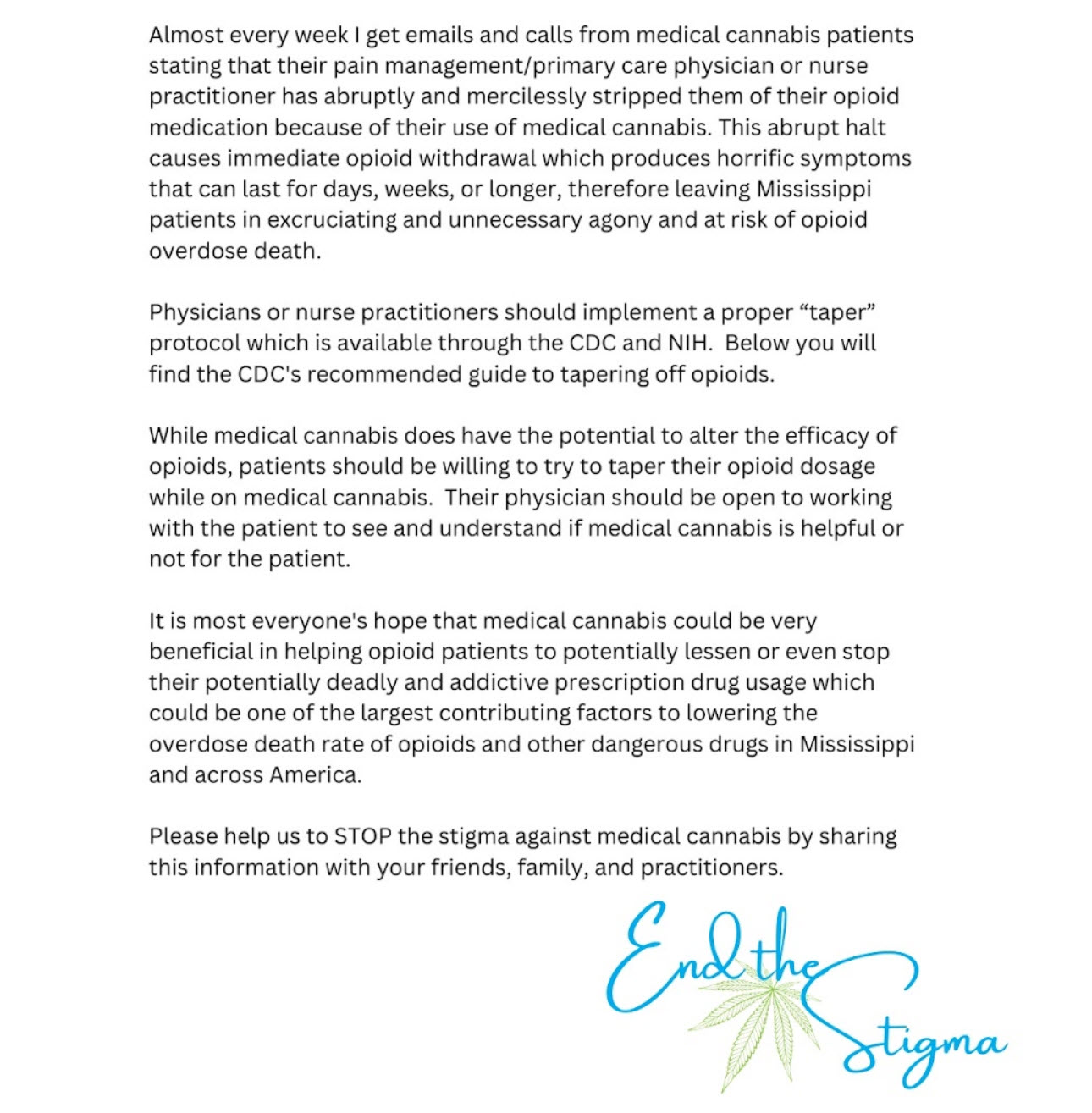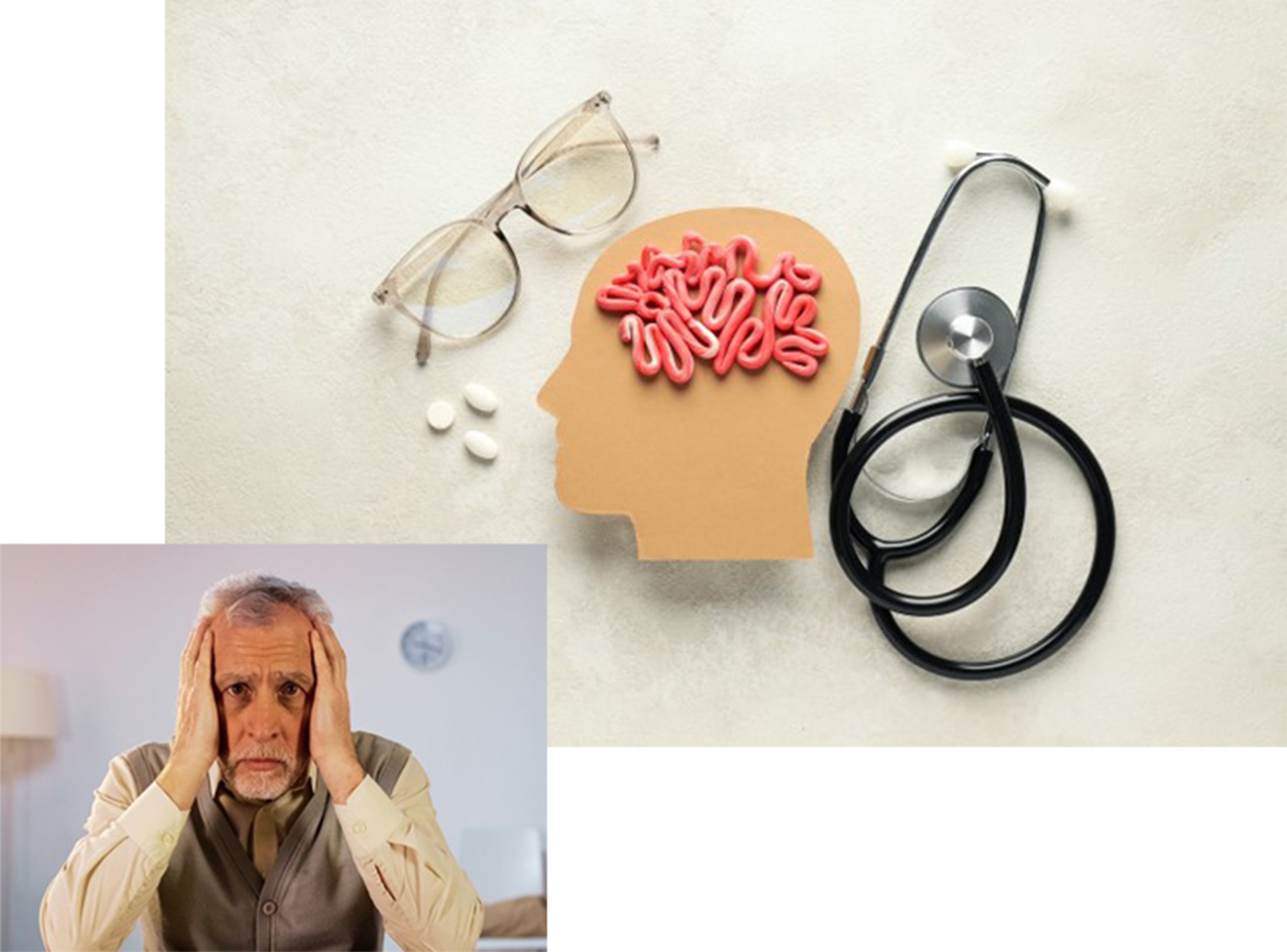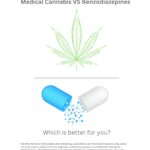The Battle is Real for Mississippi Patients.
- FRUSTRATED PATIENTS BEING PUT AT RISK
- UNINFORMED & MISINFORMED PAIN MANAGEMENT PRACTITIONERS/PHYSICIANS
- OPIOID OVERDOSE DEATHS 2021: 106,000+
- CANNABIS OVERDOSE DEATHS 2021: 0
Patients should not be penalized for using medical cannabis, which is legal in Mississippi, in order to potentially reduce or eventually come off of deadly opioids. However, many patients are being stripped immediately from opioids and benzos without proper “TAPER” protocol, which can lead to serious, if not deadly, consequences for the patient.
OPIOIDS:
Opioids are a class of drugs that work by binding to opioid receptors in the brain and spinal cord. These receptors are involved in pain perception, reward, and mood. Opioids can be used to treat pain but can also be addictive, dangerous, and even deadly.
- Opioid impairment: The effects of opioids vary depending on the type of opioid, the dose, and the individual’s metabolism. Opioids can cause drowsiness, slowed breathing, and impaired judgment. They can also cause constipation, nausea, and vomiting. In high doses, opioids can cause respiratory depression, leading to death.
- How long are humans under the influence of opioids? The duration of opioid effects also varies depending on the type of opioid, the dose, and the individual’s metabolism. In general, opioids have a half-life (the time it takes for a drug’s active ingredients in the body to be reduced by half) of 3 to 6 hours. This means that it takes 3 to 6 hours for the body to eliminate half of the drug. For example, if a person takes a 10-mg dose of morphine, it will take about 18 hours for the body to eliminate all of the drugs.
- How long are opioids in the bloodstream? The amount of time opioids remain in the bloodstream also varies depending on the type of opioid, the dose, and the individual’s metabolism. In general, opioids can be detected in the bloodstream for up to 24 hours after use. For example, if a person takes a 10-mg dose of morphine, it will be detectable in the bloodstream for up to 24 hours.
- Side effects of opioids: Opioids can vary depending on the type of opioid, the dose, and the individual’s metabolism. Some common side effects of opioids include:
- Drowsiness
- Slowed breathing
- Impaired judgment
- Constipation
- Nausea
- Vomiting
- Dizziness
- Headache
- Sweating
- Anxiety
- Hallucinations
- Seizures
- Death
- Addiction risk of opioids:
- Opioids are highly addictive. This means that people who use opioids can quickly develop a physical and psychological dependence on the drug. When people are physically dependent on opioids, they experience withdrawal symptoms if they stop using the drug. Withdrawal symptoms can be very uncomfortable and can include:
- Restlessness
- Anxiety
- Muscle aches
- Stomach cramps
- Sweating
- Chills
- Insomnia
- Nausea
- Vomiting
- Overdose death on opioids: Opioid overdose is a severe and often fatal condition. In 2021, more than 106,000 people died from drug overdoses in the United States, most of which involved opioids. Opioid overdose can happen when someone takes too much of the drug, takes it in combination with other drugs, stops and then restarts with too much, or takes it for the first time. The symptoms of opioid overdose can include:
- Slowed breathing
- Impaired judgment
- Drowsiness
- Convulsions
- Coma
- Death
The impairment from opioids can manifest in many ways, including drowsiness, dizziness, impaired judgment, and slowed reflexes. In high doses, opioids can cause respiratory depression, which can lead to death. If you are concerned about opioid use, talking to a doctor or other healthcare professional is essential.
Here is a table that summarizes the peak intoxicated time and impairment longevity for some common opioids:
Opioid | Peak Intoxicated Time | Impairment Longevity |
Morphine | 30 to 60 minutes | Several hours |
Heroin | 15 to 30 minutes | Several hours |
Fentanyl | 10 to 15 minutes | 30 to 60 minutes |
Oxycodone | 30 to 60 minutes | Several hours |
Hydrocodone | 30 to 60 minutes | Several hours |
It is important to note that these are just general guidelines. The actual impairment, longevity, and peak intoxicated time can vary from person to person.
- Benefits of opioids use: Opioids can be effective in treating pain, but they should only be used as a last resort. The risks of opioid use far outweigh the benefits, and opioids should only be used when the benefits clearly outweigh the risks.
- Opioids are a dangerous drug, and they can lead to a number of serious problems, including addiction, overdose, and death.
If you or someone you know is struggling with opioid addiction, there is help available. Please reach out to a healthcare professional or a treatment center for help.
EMERGENCY:
- “Dial 911
- Administer naloxone, if available. (FREE KIT BELOW)
- Try to keep the person awake and breathing.
- Lay the person on their side to prevent choking.
- Stay with him/her until emergency workers arrive.”
Source: CDC.gov/rxawareness
HOW MANY PEOPLE DIED FROM OPIOID OVERDOSE FROM 1999-2021?:
- 106,699
- This is more than the number of deaths from car accidents, guns, and HIV/AIDS combined.
There are no benefits to using opioids for non-medical purposes. Opioids are dangerous drugs, and they can lead to a number of serious problems, including addiction, overdose, and death.
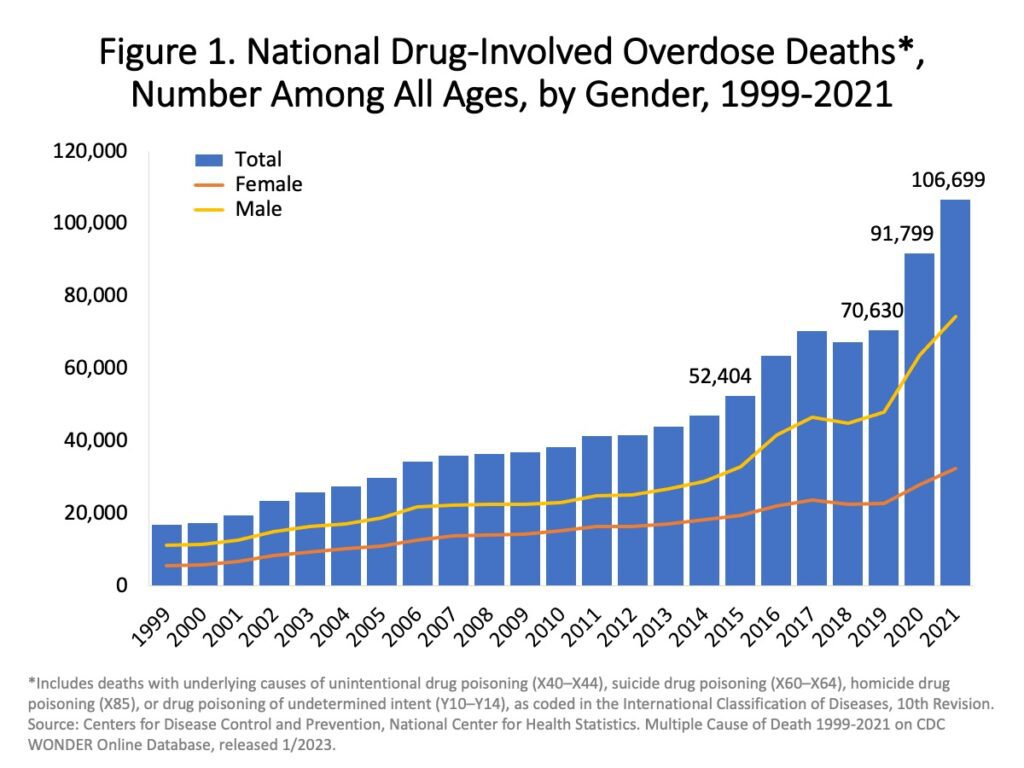
Data Resource: Click Here
CDC:
Opioid TAPER protocol:
“Discontinuing opioids after extended periods of continuous opioid use can be challenging for clinicians and patients. Tapering or discontinuing opioids in patients who have taken them long term can be associated with clinically significant risks (68), particularly if opioids are tapered rapidly or patients do not receive effective support.”
Medical cannabis patients should be prepared to lower their opioid dose since medical cannabis can potentially help to lessen the pain.
Source:
CDC Clinical Practice Guideline for Prescribing Opioids for Pain — United States, 2022 Recommendations and Reports / November 4, 2022 / 71(3);1–95Deborah Dowell, MD1; Kathleen R. Ragan, MSPH1; Christopher M. Jones, PharmD, DrPH2; Grant T. Baldwin, PhD1; Roger Chou, MD3
MEDICAL CANNABIS PROS/CONS:
Medical cannabis is a term used to describe the use of the Cannabis sativa L. plant and its cannabinoids to treat a variety of medical conditions. Cannabis is a plant that contains over 100 different cannabinoids, which are chemical compounds that interact with the body’s endocannabinoid system. The endocannabinoid system is a network of receptors throughout the body that helps to regulate a variety of functions, including pain, inflammation, appetite, and mood.
There is a growing body of research that suggests that medical cannabis can be effective in treating a variety of medical conditions, including but not limited to:
- Chronic pain: Medical cannabis can be effective in reducing chronic pain, including pain caused by arthritis, cancer, Sickle Cell Anemia, and chronic headaches.
- Epilepsy: Medical cannabis has been shown to be effective in reducing the frequency and severity of seizures in people with epilepsy.
- Multiple sclerosis: Medical cannabis can be effective in reducing spasticity, pain, and fatigue in people with multiple sclerosis.
- Nausea and vomiting: Medical cannabis can be effective in reducing nausea and vomiting caused by chemotherapy and other medical treatments.
- Appetite loss: Medical cannabis can be effective in increasing appetite in people with HIV/AIDS, cancer, and other conditions that cause weight loss.
- PTSD: Medical cannabis can be effective in reducing the symptoms of PTSD, including nightmares, flashbacks, and anxiety.
- Autism spectrum disorder: Medical cannabis has been shown to be effective in reducing irritability, hyperactivity, and repetitive behaviors in people with autism spectrum disorder.
- Other conditions medical cannabis can treat but not yet approved in Mississippi as a qualifying medical condition.
- Insomnia: Medical cannabis can be effective in improving sleep quality in people with insomnia.
- Anxiety: Medical cannabis can be effective in reducing anxiety in people with anxiety disorders.
- Other conditions medical cannabis can treat but not yet approved in Mississippi as a qualifying medical condition.
It is important to note that the research on medical cannabis is still in its early stages, and more research is needed to fully understand its potential benefits and risks. Additionally, the legal status of medical cannabis varies from state to state, and is still Federally illegal as a Schedule 1 Drug.
Here are some additional things to keep in mind about medical cannabis:
- It is not legal in all states. If you live in a Mississippi, where medical cannabis is legal, you will need to obtain a medical cannabis certification from a MSDH approved practitioner in Mississippi and then apply with the MSDH MMCP online.
- It is not regulated by the FDA. This means that there is no guarantee of the quality or safety of medical cannabis products.
- It can interact with other medications. If you are taking other medications, it is important to talk to your doctor about the potential interactions with medical cannabis.
- It can have side effects. The most common side effects of medical cannabis include dry mouth, drowsiness, and dizziness. Less common side effects can include anxiety, paranoia, and hallucinations.
Cannabinoids have been shown to have a number of therapeutic benefits, including:
- Pain relief: Cannabinoids can be effective in relieving pain from a variety of conditions, including chronic pain, cancer pain, and neuropathic pain.
- Inflammation: Cannabinoids can reduce inflammation, which is a key factor in a number of conditions, including arthritis, Crohn’s disease, and multiple sclerosis.
- Appetite stimulation: Cannabinoids can stimulate appetite, which can be helpful for people who have lost their appetite due to cancer, HIV/AIDS, or other conditions.
- Nausea and vomiting: Cannabinoids can help to reduce nausea and vomiting, which are common side effects of chemotherapy and other medical treatments.
- Epilepsy: Cannabinoids have been shown to be effective in reducing seizures in people with epilepsy.
- Mental health: Cannabinoids may be helpful for treating a variety of mental health conditions, including anxiety, depression, and post-traumatic stress disorder (PTSD).
Medical cannabis is not without risks. Some potential side effects of medical cannabis use include:
- Dizziness: Cannabinoids can cause dizziness, which can make it difficult to drive or operate machinery. Increased fall risk.
- Impaired coordination: Cannabinoids can impair coordination, which can increase the risk of falls and accidents.
- Memory problems: Cannabinoids can cause memory problems, which can make it difficult to learn new information or remember things.
- Psychosis: In rare cases, cannabinoids can trigger psychosis, a mental health condition that is characterized by hallucinations and delusions.
- Cannabis impairment: The effects of cannabis can last anywhere from 30 minutes to 3 hours, depending on the potency of the cannabis, the person’s body weight, and their individual metabolism. The NIH reported that “…there was no difference between any of the THC groups and placebo on any neurocognitive measure after 4 hours of recovery.” Some people may experience impaired judgment, coordination, and decision-making skills while impaired. They may also have difficulty concentrating and paying attention while impaired.
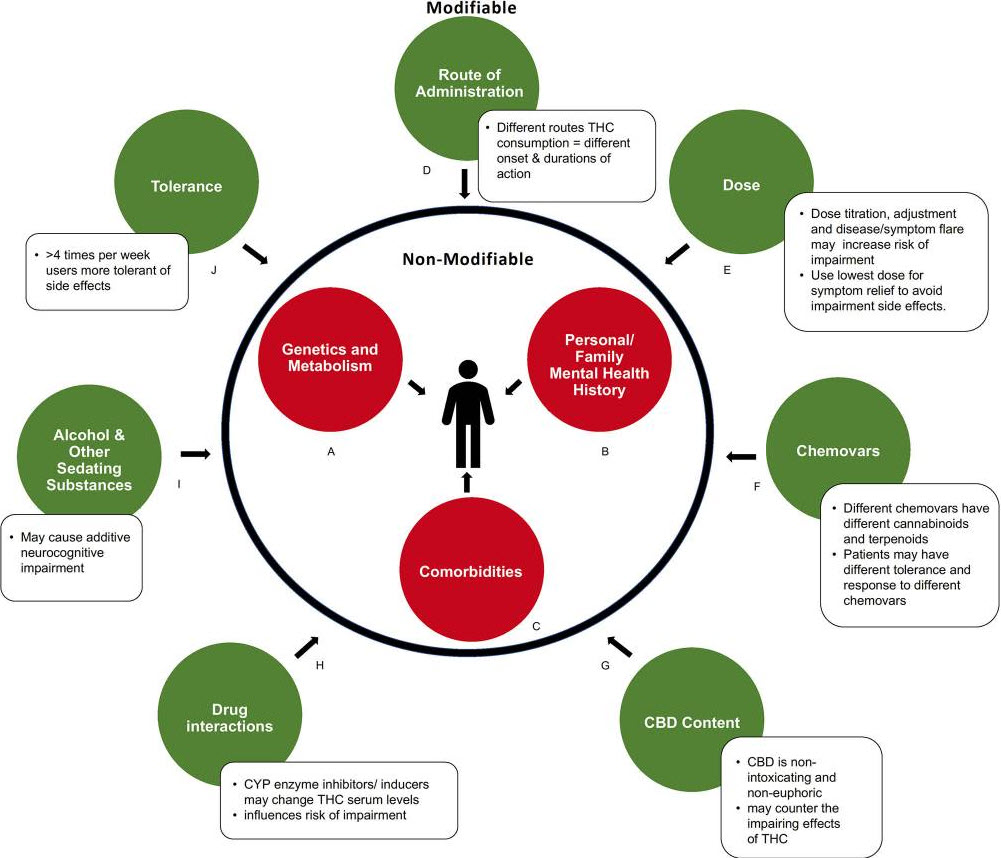
- How long is THC in the body: Typically, cannabis (THC) can be detected in the bloodstream for up to 12 hours, urine 1 to 30 days, saliva for 24 hours, and 90 days in hair, all depending on patient usage. However, the amount of cannabis that can be detected decreases over time. After one day, only about 10% of the cannabis that was consumed is still in the bloodstream. After two days, only about 5% is still present. And after three days, only about 2% remains. Everyone metabolizes cannabis differently and will have varying results.
- Side effects of cannabis: The side effects of cannabis use can vary from person to person. Some common side effects include:
- Dry mouth
- Red eyes
- Increased heart rate
- Anxiety
- Paranoia
- Hallucinations
- Dizziness
- Nausea
- Vomiting
- Psychosis (in rare cases)
- Addiction risk of cannabis: The addiction risk of cannabis is low compared to other drugs, such as opioids, alcohol, and cocaine. However, some people can become addicted to cannabis.
- Cannabis tolerance: The body’s ability to require more and more THC and/or cannabinoids.
- Tolerance break: slowly taper back on usage and potency; until you take no cannabis for 21 days. Then slowly reintroduce medical cannabis at a lower potency and lower usage rate.
Overdose death on cannabis: There have been no reported cases of death from tested medical cannabis overdose. However, cannabis can be dangerous if it is used in conjunction or laced with other drugs or alcohol.
Benefits of cannabis use: There are some potential benefits to using cannabis, such as:
- Pain relief
- Nausea relief
- Appetite stimulation
- Muscle relaxation
- Sleep improvement
- PTSD
- Seizure reduction
Medical cannabis may be a safe and effective treatment for some conditions, but it is important to talk to your doctor/practitioner about the risks and benefits before starting treatment especially if taking other prescribed medications since it can potentially increase or decrease the efficacy of the prescription drugs.
It is important to note that cannabis is not a cure for any condition and can only provide temporary relief of symptoms.
Cannabis is a drug, and like any other drug, there are risks associated with using cannabis which can have both positive and negative effects that differ per individual. It is important to weigh the risks and benefits of cannabis use before deciding whether or not to use it. Always discuss your potential medical cannabis use with your primary care physician/practitioner and medical cannabis practitioner.
Source:
- PMC: PubMed Central, NIH-National Library of Medicine, “Duration of Neurocognitive Impairment with Medical Cannabis Use: A Scoping Review”, www.ncbi.nlm.gov/pmc/articles/PMC8006301/
- American Addiction Centers, “How long does marijuana (weed) stay in your system?” www.addictioncenters.org
